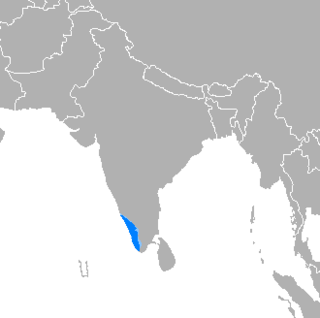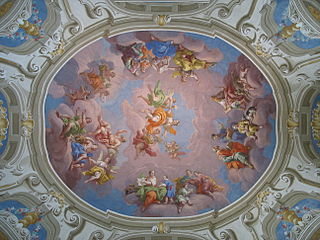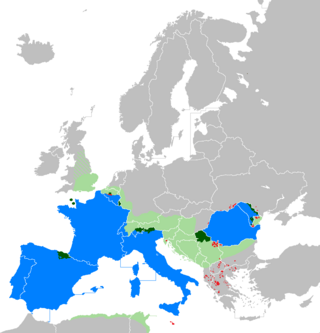The article's lead section may need to be rewritten. The reason given is: The lead is too short.(December 2023) |
A classical language is any language with an independent literary tradition and a large body of ancient written literature. [1]
The article's lead section may need to be rewritten. The reason given is: The lead is too short.(December 2023) |
A classical language is any language with an independent literary tradition and a large body of ancient written literature. [1]
In the context of traditional European classical studies, the "classical languages" refer to Greek and Latin, which were the literary languages of the Mediterranean world in classical antiquity.
Greek was the language of Homer and of classical Athenian, Hellenistic and Byzantine historians, playwrights, and philosophers. It has contributed many words to the vocabulary of English and many other European languages, and has been a standard subject of study in Western educational institutions since the Renaissance. Latinized forms of Ancient Greek roots are used in many of the scientific names of species and in other scientific terminology. Koine Greek, which served as a lingua franca in the Eastern Roman Empire, remains in use today as a sacred language in some Eastern Orthodox churches.
Latin became the lingua franca of the early Roman Empire and later of the Western Roman Empire. Despite the decline of the Western Roman Empire, the Latin language continued to flourish in the very different social and economic environment of the Middle Ages, not least because it became the official language of the Roman Catholic Church. In Western and Central Europe and in parts of northern Africa, Latin retained its elevated status as the main vehicle of communication for the learned classes throughout the Middle Ages and subsequently; witness especially the Renaissance and Baroque periods. This language was not supplanted for scientific purposes until the 18th century, and for formal descriptions in zoology as well as botany it survived to the later 20th century. The modern international binomial nomenclature holds to this day: taxonomists assign a Latin or Latinized name as the scientific name of each species.
In terms of worldwide cultural importance, Edward Sapir in his 1921 book Language extends the list to include classical Chinese, Arabic, and Sanskrit:
When we realize that an educated Japanese can hardly frame a single literary sentence without the use of Chinese resources, that to this day Siamese and Burmese and Cambodgian bear the unmistakable imprint of the Sanskrit and Pali that came in with Hindu Buddhism centuries ago, or that whether we argue for or against the teaching of Latin and Greek [in schools,] our argument is sure to be studded with words that have come to us from Rome and Athens, we get some indication of what early Chinese culture and Buddhism, and classical Mediterranean civilization have meant in the world's history. There are just five languages that have had an overwhelming significance as carriers of culture. They are classical Chinese, Sanskrit, Arabic, Greek, and Latin. In comparison with these, even such culturally important languages as Hebrew and French sink into a secondary position. [2]
In this sense, a classical language is a language that has a broad influence over an extended period of time, even after it is no longer a colloquial mother tongue in its original form. If one language uses roots from another language to coin words (in the way that many European languages use Greek and Latin roots to devise new words such as "telephone", etc.), this is an indication that the second language is a classical language.[ citation needed ]
In comparison, living languages with a large sphere of influence are known as world languages.
This article possibly contains original research .(November 2022) |
The following languages are generally taken to have a "classical" stage. Such a stage is limited in time and is considered "classical" if it comes to be regarded as a literary "golden age" retrospectively.[ citation needed ] Thus, Classical Greek is the language of 5th to 4th century BC Athens and, as such, only a small subset of the varieties of the Greek language as a whole. A "classical" period usually corresponds to a flowering of literature following an "archaic" period, such as Classical Latin succeeding Old Latin, Classical Sumerian succeeding Archaic Sumerian, Classical Sanskrit succeeding Vedic Sanskrit, Classical Persian succeeding Old Persian. This is partly a matter of terminology, and for example Old Chinese is taken to include rather than precede Classical Chinese. In some cases, such as those of Persian and Tamil, the "classical" stage corresponds to the earliest attested literary variant. [3]
This section needs additional citations for verification .(March 2023) |

Classics or classical studies is the study of classical antiquity. In the Western world, classics traditionally refers to the study of Classical Greek and Roman literature and their related original languages, Ancient Greek and Latin. Classics also includes Greco-Roman philosophy, history, archaeology, anthropology, art, mythology and society as secondary subjects.
Latin literature includes the essays, histories, poems, plays, and other writings written in the Latin language. The beginning of formal Latin literature dates to 240 BC, when the first stage play in Latin was performed in Rome. Latin literature flourished for the next six centuries. The classical era of Latin literature can be roughly divided into several periods: Early Latin literature, The Golden Age, The Imperial Period and Late Antiquity.

Tamil is a Dravidian language natively spoken by the Tamil people of South Asia. Tamil is an official language of the Indian state of Tamil Nadu and union territory of Puducherry, and the sovereign nations of Sri Lanka and Singapore. Tamil is also spoken by significant minorities in the four other South Indian states of Kerala, Karnataka, Andhra Pradesh and Telangana, and the Union Territory of the Andaman and Nicobar Islands. It is also spoken by the Tamil diaspora found in many countries, including Malaysia, Myanmar, South Africa, United Kingdom, United States, Canada, Australia, New Zealand, United Arab Emirates, Saudi Arabia, France, Germany, Italy, Indonesia, and Mauritius. Tamil is also natively spoken by the Sri Lankan Moors. One of 22 scheduled languages in the Constitution of India, Tamil was the first to be classified as a classical language of India.

Malayalam is a Dravidian language spoken in the Indian state of Kerala and the union territories of Lakshadweep and Puducherry by the Malayali people. It is one of 22 scheduled languages of India. Malayalam was designated a "Classical Language of India" in 2013. Malayalam has official language status in Kerala, Lakshadweep and Puducherry (Mahé), and is also the primary spoken language of Lakshadweep and is spoken by 35 million people in India. Malayalam is also spoken by linguistic minorities in the neighbouring states; with a significant number of speakers in the Kodagu and Dakshina Kannada districts of Karnataka, and Kanyakumari, Coimbatore and Nilgiris district of Tamil Nadu. It is also spoken by the Malayali Diaspora worldwide, especially in the Persian Gulf countries, due to the large populations of Malayali expatriates there. They are a significant population in each city in India including Mumbai, Bengaluru, Delhi, Kolkata, Pune etc. Malayalam is closely related to the Tamil language.
A lingua franca, also known as a bridge language, common language, trade language, auxiliary language, vehicular language, or link language, is a language systematically used to make communication possible between groups of people who do not share a native language or dialect, particularly when it is a third language that is distinct from both of the speakers' native languages.
The history of literature is the historical development of writings in prose or poetry that attempt to provide entertainment or education to the reader, as well as the development of the literary techniques used in the communication of these pieces. Not all writings constitute literature. Some recorded materials, such as compilations of data are not considered literature, and this article relates only to the evolution of the works defined above.

Malayalam, the lingua franca of the Indian state of Kerala and the union territories of Lakshadweep and Puduchery, is one of the six classical languages of India. Malayalam literature comprises those literary texts written in Malayalam, a South-Dravidian language spoken in the Indian state of Kerala. The first travelogue in any Indian language is the Malayalam Varthamanappusthakam, written by Paremmakkal Thoma Kathanar in 1785. Malayalam literature has been presented with 6 Jnanapith awards, the second-most for any Dravidian language and the third-highest for any Indian language.

A sacred language, holy language or liturgical language is a language that is cultivated and used primarily for religious reasons by people who speak another, primary language in their daily lives.
Vernacular literature is literature written in the vernacular—the speech of the "common people".
Vernacular is the ordinary, informal, spoken form of language, particularly when perceived as being of lower social status in contrast to standard language, which is more codified, institutional, literary, or formal. More narrowly, a particular variety of a language that meets the lower-status perception, and sometimes even carries social stigma, is also called a vernacular, vernacular dialect, nonstandard dialect, etc. and is typically its speakers' native variety. Despite any such stigma, modern linguistics regards all nonstandard dialects as grammatically full-fledged varieties of a language.

The history of the Scots language refers to how Anglic varieties spoken in parts of Scotland developed into modern Scots.

The langues d'oïl are a dialect continuum that includes standard French and its closest autochthonous relatives historically spoken in the northern half of France, southern Belgium, and the Channel Islands. They belong to the larger category of Gallo-Romance languages, which also include the historical languages of east-central France and western Switzerland, southern France, portions of northern Italy, the Val d'Aran in Spain, and under certain acceptations those of Catalonia.
Greek is an Indo-European language, the sole surviving descendant of the Hellenic sub-family. Although it split off from other Indo-European languages before 2000 BC, it is first attested in the Bronze Age as Mycenaean Greek. During the Archaic and Classical eras, Greek speakers wrote numerous texts in a variety of dialects known collectively as Ancient Greek. In the Hellenistic era, these dialects underwent dialect levelling to form Koine Greek which was used as a lingua franca throughout the eastern Roman Empire, and later grew into Medieval Greek. For much of the period of Modern Greek, the language existed in a situation of diglossia, where speakers would switch between informal varieties known as Dimotiki and a formal one known as Katharevousa. Present-day Modern Standard Greek is largely an outgrowth of Dimotiki, with some features retained from Katharevousa.

Byzantine literature is the Greek literature of the Middle Ages, whether written in the territory of the Byzantine Empire or outside its borders. It forms the second period in the history of Greek literature after Ancient Greek literature.

Latin is a member of the broad family of Italic languages. Its alphabet, the Latin alphabet, emerged from the Old Italic alphabets, which in turn were derived from the Etruscan, Greek and Phoenician scripts. Historical Latin came from the prehistoric language of the Latium region, specifically around the River Tiber, where Roman civilization first developed. How and when Latin came to be spoken has long been debated.

Since the Iron Age in India, the native languages of the Indian subcontinent are divided into various language families, of which the Indo-Aryan and the Dravidian are the most widely spoken. There are also many languages belonging to unrelated language families such as Munda and Tibeto-Burman, spoken by smaller groups.
The following outline is provided as an overview of and topical guide to ancient history:

The legacy of the Roman Empire has been varied and significant. The Roman Empire, itself built upon the legacy of other cultures, has had long-lasting influence with broad geographical reach on a great range of cultural aspects, including state institutions, law, cultural values, religious beliefs, technological advances, engineering, and language.